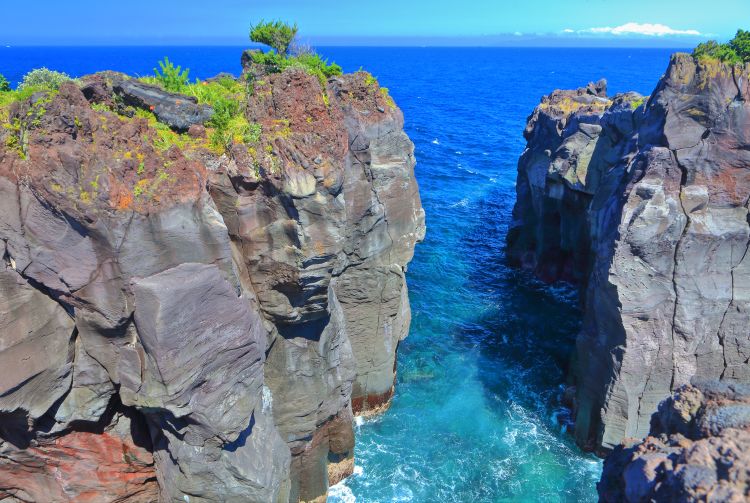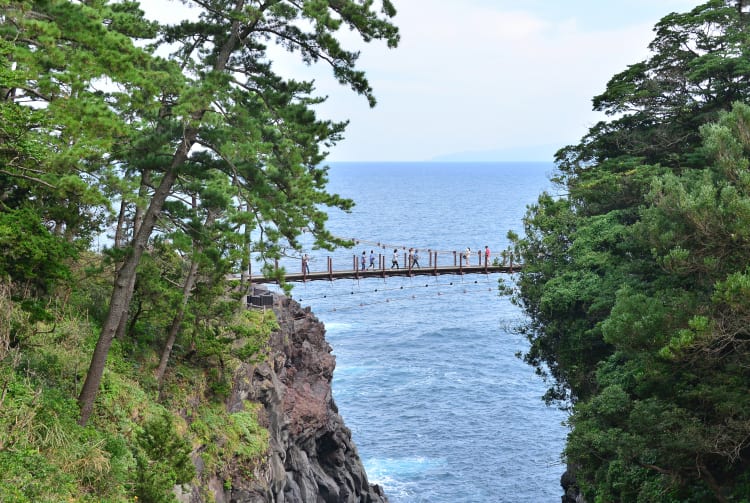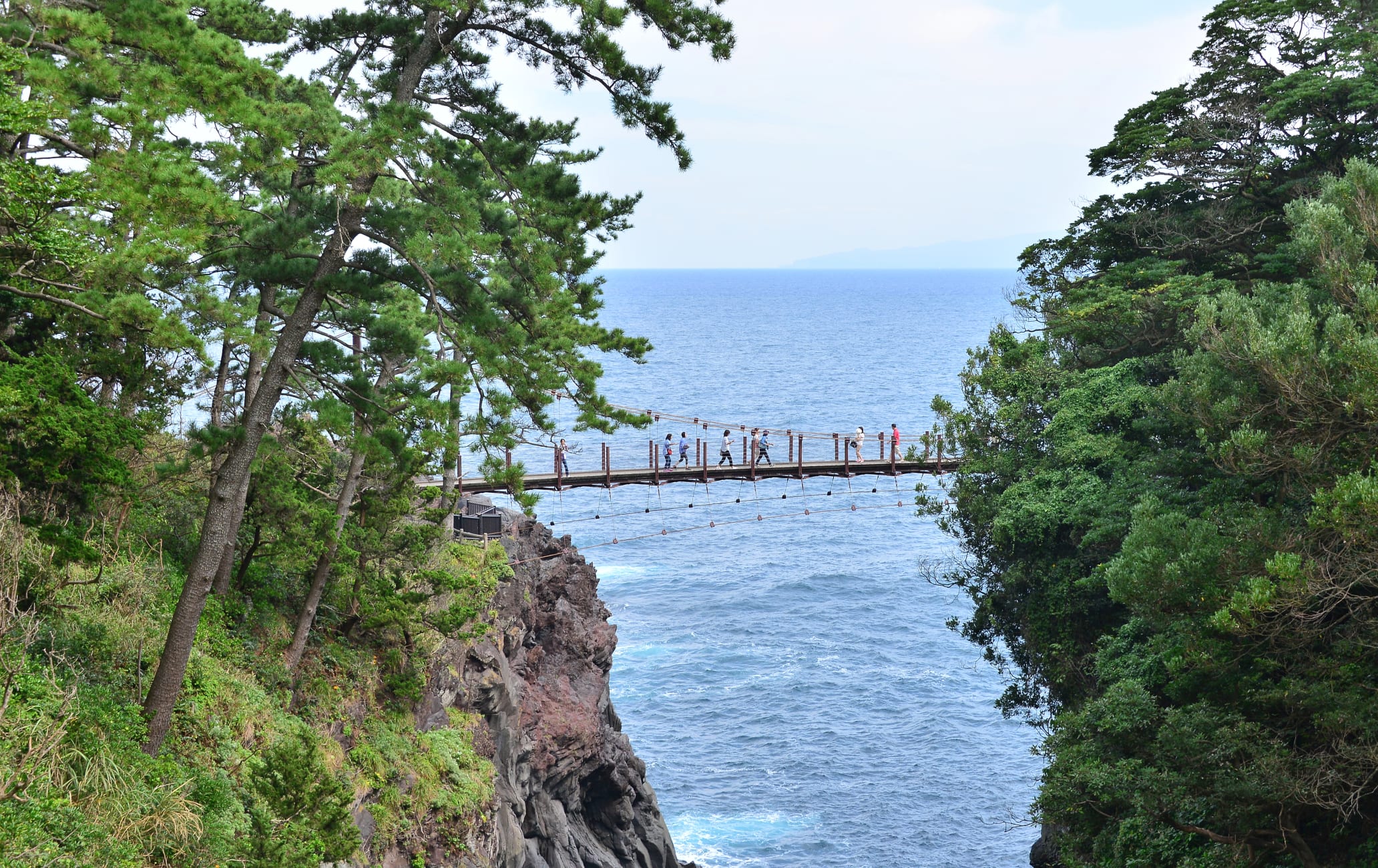Gorgeous natural beauty and views of the Pacific along the Jogasaki Coast
The Jogasaki Coast offers nine kilometers of spectacular coastline accessible by various walking trails, such as the Picnical Course and Nature Study Trail. It's a quiet place full of natural beauty that offers incredible views of the Pacific Ocean.

How to Get There
The Jogasaki Coast is accessible by bus and walkable from the station.
From Tokyo, take the shinkansen to Atami. From there, change to the Izu Kyuko Line and travel 50 minutes south to Izu Kogen Station.
From there, an hourly bus runs to Izu Kaiyo Koen (about 10 minutes) where the Picnical Course begins and heads north along the coast.
It is also possible to walk from Jogasaki Kaigan Station, depending on whether you want to do the course north to south or vice versa.
Quick Facts
Formed by a volcanic eruption some 4,000 years ago
The Jogasaki coastal trail stretches for nine kilometers
A rugged stretch of coastline
Jogasaki Coast is a rugged stretch of the Izu Peninsula formed by cooling lava flows. The whole coast is beautiful and can be walked in total or taken in small sections. Spectacular views of the sea, Oshima Island and, on clear days, the Izu Islands, draw many visitors every year.

Suspended above the sea and rocks
One highlight to look for is the Kadowaki Suspension Bridge, which hangs 23 meters above an inlet of clear water and sharp rocks. The path passes holes in the ground where you can look down on the sea and rocks below. There is also a restaurant near the Boranaya parking lot, near the entrance to the course.

* The information on this page may be subject to change due to COVID-19.

































































